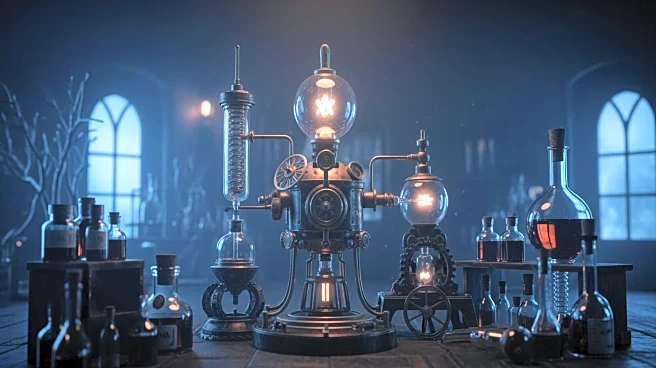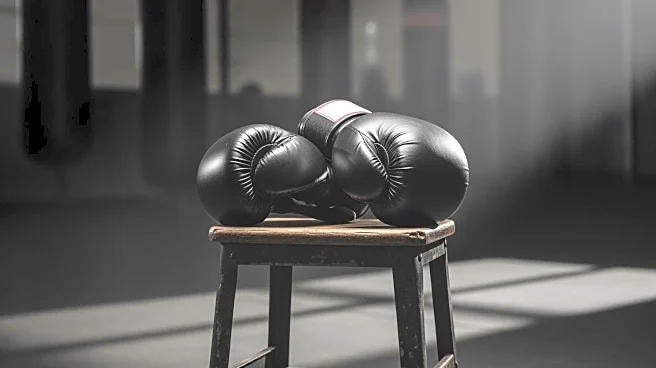What's Happening?
Netflix's latest adaptation of Mary Shelley's 'Frankenstein,' directed by Guillermo del Toro, presents a unique portrayal of the Creature, played by Jacob Elordi. Unlike traditional depictions, this version
of the Creature is described as attractive, challenging the conventional image of Frankenstein's monster. The film diverges from Shelley's original narrative by emphasizing the Creature's aesthetic appeal and romantic potential, aligning with modern 'romantasy' trends. The story follows Victor Frankenstein, portrayed by Oscar Isaac, as he creates a being that defies the grotesque expectations set by previous adaptations. The Creature's design incorporates elements that make it appear more human and less monstrous, with smooth skin panels and a self-healing ability, setting it apart from the stitched-together appearance of earlier versions.
Why It's Important?
This adaptation reflects a broader cultural shift towards reimagining classic horror figures in a more romantic and appealing light. By presenting the Creature as attractive, the film taps into contemporary audiences' fascination with complex, misunderstood characters who possess both beauty and depth. This approach could influence future adaptations of classic literature, encouraging filmmakers to explore new dimensions of well-known stories. The film's portrayal of the Creature challenges traditional narratives about beauty and monstrosity, potentially impacting societal perceptions of difference and acceptance. It also highlights the evolving nature of storytelling in the film industry, where blending genres and reinterpreting iconic characters can lead to fresh and engaging content.
What's Next?
The film's release may spark discussions about the portrayal of classic literary characters in modern media. Audiences and critics might debate the merits of altering traditional narratives to fit contemporary tastes. The success of this adaptation could inspire other filmmakers to explore similar reinterpretations of classic tales, potentially leading to a trend of romanticizing traditionally monstrous figures. Additionally, the film's reception could influence how future adaptations balance fidelity to source material with creative innovation.
Beyond the Headlines
The film raises questions about the ethical implications of altering classic narratives. By presenting the Creature as attractive, the adaptation challenges viewers to reconsider their preconceived notions about beauty and monstrosity. This could lead to broader discussions about societal standards of beauty and the acceptance of those who differ from the norm. The film also explores themes of creation and responsibility, prompting audiences to reflect on the consequences of playing God and the moral obligations of creators towards their creations.











